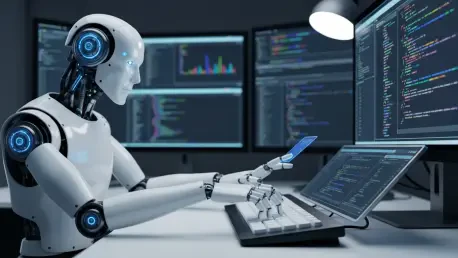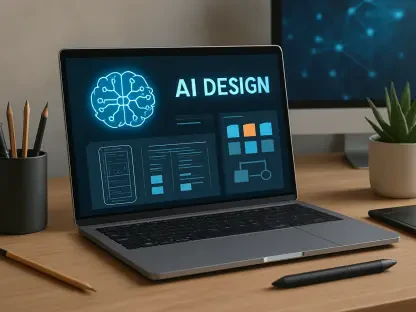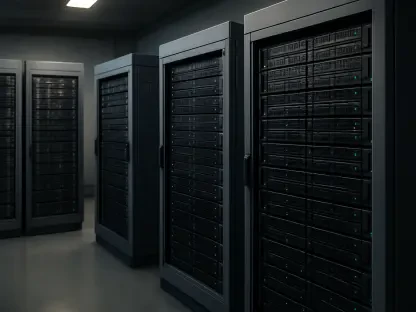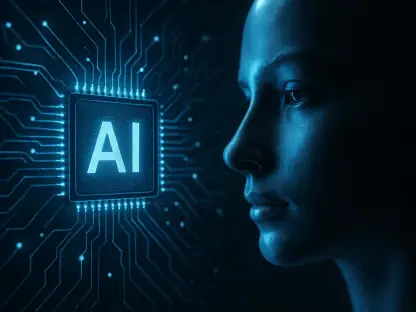The Promise and Reality of AI in Software Development
The software development landscape has witnessed a seismic shift with the advent of artificial intelligence, particularly through tools powered by large language models (LLMs). These technologies have surged in popularity among developers, promising to revolutionize coding by automating repetitive tasks and accelerating the creative process. From crafting initial prototypes to generating complex algorithms in mere seconds, AI has captured the imagination of the tech industry, positioning itself as a game-changer in how software is conceptualized and built.
Despite this enthusiasm, the transformative potential of AI often overshadows a critical reality: its output frequently falls short in production environments. While tools like GitHub Copilot have become staples for ideation and rapid prototyping, they struggle to deliver code that seamlessly integrates into live systems with stringent reliability and performance demands. The gap between dazzling demo outputs and the gritty requirements of deployable software remains a persistent challenge, raising questions about the readiness of AI for real-world applications.
This discrepancy is fueled by emerging trends in AI-assisted development, where the focus has been on enhancing developer productivity in early-stage tasks. However, as adoption grows, the industry is beginning to recognize that the hype surrounding these tools does not fully align with their ability to handle the nuanced, complex needs of production-ready software. Bridging this divide requires a deeper examination of where AI excels and where it falters in the development lifecycle.
Core Limitations of AI-Generated Code
Struggles with Complex Tech Stacks
AI shines in so-called “greenfield” scenarios, where code can be generated in isolation without the constraints of pre-existing systems. In such environments, LLMs can produce functional snippets or even full applications based on clear, well-defined prompts. This capability is invaluable for brainstorming and prototyping, allowing developers to explore ideas without the burden of starting from scratch.
However, the reality of most production environments is far from a blank slate. Legacy systems, intricate service architectures, and interdependent tech stacks dominate enterprise settings, demanding a level of precision and contextual awareness that AI often lacks. When tasked with integrating into these environments, AI-generated code frequently introduces errors, incompatibilities, or inefficiencies, as it struggles to account for the specific parameters and historical decisions embedded in existing infrastructures.
This limitation becomes especially evident when dealing with strict performance requirements or security protocols. A minor oversight in AI output can cascade into significant failures, as compilers and runtimes offer no leniency for imprecision. The inability to navigate these complex, real-world constraints underscores a fundamental barrier to AI’s effectiveness beyond controlled, idealized settings.
The Debugging and Maintenance Challenge
Beyond integration, AI faces substantial hurdles in debugging and maintaining the code it produces. Effective debugging demands a systemic understanding of how data flows through an application, often requiring insight into historical design choices or undocumented workarounds. Unfortunately, current AI tools operate with a limited memory scope, unable to retain context across interactions or grasp the broader architecture of a codebase.
This issue, often referred to as the “Dory Problem,” likens AI’s short-term memory to the forgetful fish from popular animation, highlighting its inability to reverse-engineer complex systems or address emergent behaviors. In environments with significant technical debt—where decades of decisions create a tangled web of dependencies—AI struggles to provide meaningful fixes or updates, leaving developers to manually resolve issues that the tool cannot comprehend.
The maintenance challenge is compounded in organizations where codebases evolve over time through iterative, often poorly documented changes. Without a persistent understanding of these nuances, AI-generated solutions risk introducing new problems rather than resolving existing ones, further emphasizing the gap between its creative potential and practical utility in ongoing software management.
Uneven Maturity Across the Software Development Life Cycle (SDLC)
The evolution of AI in software development reveals a stark imbalance across different phases of the SDLC. Code generation has advanced remarkably, transitioning from basic autocomplete functionalities to sophisticated chat-based workflows where developers articulate intent rather than manually write every line. This progress has streamlined early-stage development, enabling faster iteration and experimentation.
However, other critical areas such as deployment, code review, and quality assurance remain underdeveloped in terms of AI integration. These phases require rigorous validation, adherence to standards, and deep contextual analysis—capabilities that current AI tools are not yet equipped to handle effectively. This disparity creates bottlenecks, as the speed gained in code creation is often offset by delays in ensuring that output meets production-grade criteria.
Early-stage adoption of AI in non-generation phases shows promise but is far from mature. For instance, some tools are beginning to assist with automated testing or basic review processes, yet they lack the depth needed for comprehensive oversight. Until AI capabilities evolve to address the entire SDLC holistically, engineering velocity will remain constrained, limiting the broader impact of these technologies on software innovation.
Systemic and Organizational Barriers to AI Integration
Beyond technical shortcomings, systemic and organizational challenges further impede the adoption of AI in production settings. A cognitive mismatch exists between what AI can achieve—primarily creative, unconstrained outputs—and the structured, precise demands of operational software. This disconnect often results in code that, while innovative, fails to align with the specific needs of a live environment, leading to wasted effort and resources.
Resistance within organizations adds another layer of complexity. Concerns over reliability, potential security vulnerabilities, and inconsistent performance deter many teams from fully embracing AI tools. Decision-makers often prioritize proven, manual processes over experimental technologies, especially in high-stakes industries where errors can have severe consequences, further slowing the integration of AI into critical workflows.
Addressing these barriers requires strategic interventions, such as reimagining development workflows to better accommodate AI strengths while compensating for weaknesses. Investing in tools designed to tackle systemic complexity—rather than isolated tasks—could also pave the way for broader acceptance. Encouraging a cultural shift toward experimentation, coupled with robust training on AI limitations, may help organizations overcome hesitancy and harness the technology more effectively.
Future Directions for AI in Production Environments
Looking ahead, the path for AI in software development hinges on the emergence of solutions that address systemic challenges rather than merely augmenting individual tasks. Tools capable of reverse-engineering complex systems, systematically mapping states, and identifying conditions for unexpected behaviors are critical. Such advancements would enable AI to transition from a creative aid to a scientific problem-solver adept at navigating real-world software intricacies.
The potential for AI to manage end-to-end SDLC processes is another area of exploration. Rather than focusing solely on code generation, future tools could oversee deployment, monitor performance, and even handle customer support interactions. This holistic approach would require significant innovation, but it holds the promise of unlocking true engineering velocity by eliminating current bottlenecks across development phases.
Industry collaboration and evolving consumer expectations will also shape AI’s trajectory. As stakeholders demand more reliable, integrated solutions, partnerships between tech providers, enterprises, and academia could drive the development of standardized frameworks for AI in production. This collective effort, combined with a focus on adaptability, may ultimately redefine how software is built and maintained in the coming years.
Bridging the Gap Between Prototype and Production
Reflecting on the insights gathered, it becomes clear that AI-generated code struggles in production environments due to integration challenges with complex tech stacks, limitations in debugging and maintenance, and uneven maturity across the SDLC. These issues paint a picture of a technology brimming with potential yet constrained by practical shortcomings that hinder its impact on deployable software.
To move forward, developers and organizations are encouraged to prioritize integrated, systemic AI solutions that address the full spectrum of software operations. Investing in tools designed to handle end-to-end processes, rather than isolated steps, emerges as a key strategy to close the persistent gap between prototype and production.
Additionally, fostering a mindset of collaboration and continuous learning stands out as essential for adapting to AI’s evolving role. By focusing on comprehensive training and workflow redesign, the industry can better position itself to leverage AI’s strengths while mitigating its weaknesses, paving the way for a more seamless transition from innovative ideas to reliable, operational systems.









